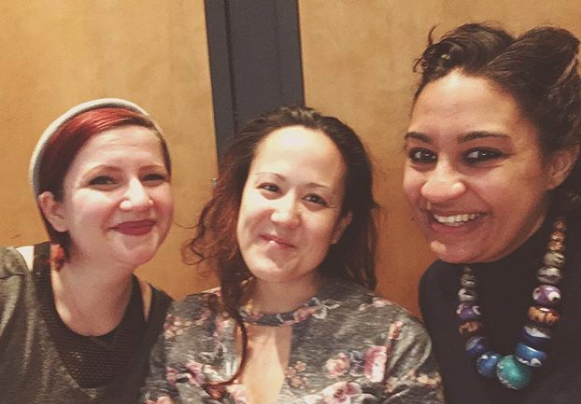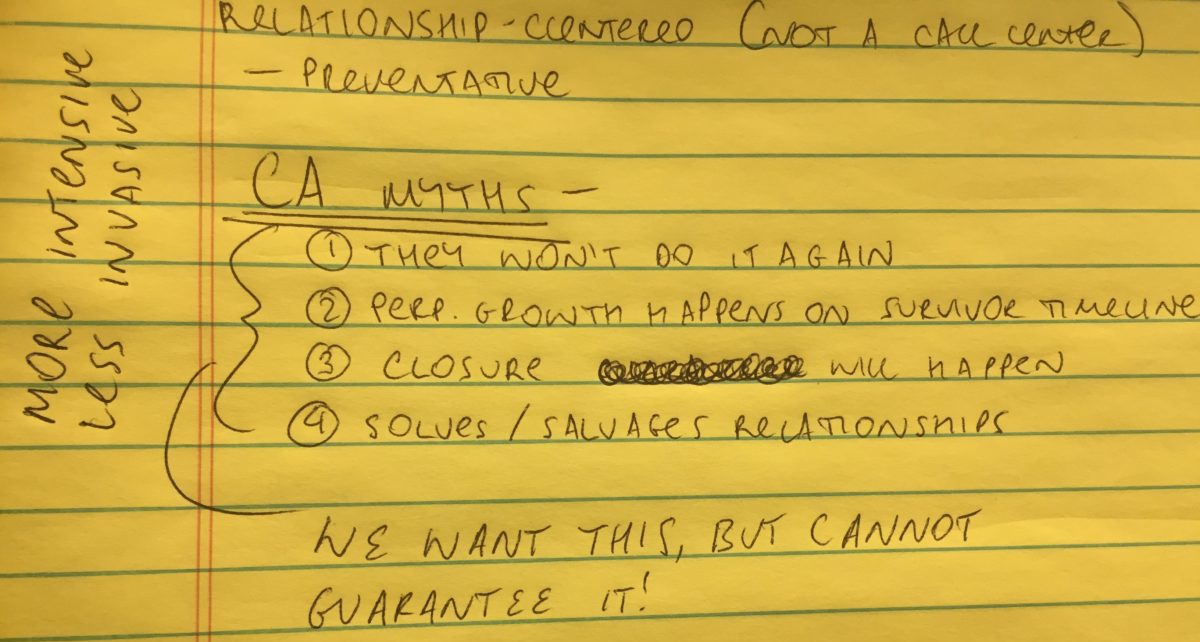Community accountability: an antibiotic for gendered violence
Last weekend, while inspiring young people were speaking out and marching to end gun violence, our crew was in Chicago learning about community accountability processes from 20+ year activist and consultant Shira Hassan of the Just Practice Collaborative.
In the training, Shira described community accountability as an antibiotic for gendered violence – the way we deal with the aftermath of harm to repair and rebuild safety. Community accountability is a comprehensive approach that seeks to address abusive behavior, support targeted community members, and transform the conditions that reinforce oppression and violence. And in movement spaces, many of us (maybe just me?) have romanticized community accountability as the way to heal harm in line with our values — centering survivors, opposing criminalization, and believing that no one is disposable and that everyone in our community deserves dignity and respect.

Here at CASS, we’ve got probiotics down: our trainings educate people on the issue and equip them to respond to everyday incidents of harassment, our Rethink Masculinity program guides participants through pod mapping, our arts and awareness campaigns are bringing about cultural change to transform the conditions that allow gendered violence to continue. But we’ve faced our fair share of challenges when pursuing accountability: we’ve been at tables with people who weren’t ready to acknowledge their harm, we’ve struggled to get harm doers to the table in the first place, we’ve experienced gaslighting from people who caused harm. We traveled to Chicago to learn from our mistakes, and from the mistakes of other organizers, so we can better serve our community.
Here’s the number one takeaway from CASS’ Anna and Chantal, both of whom also attended this training.
From Anna:
Community accountability processes are a powerful tool in the transformative justice toolbox, and they were created out of intense necessity, pioneered by communities for whom legal recourse was not an option. One of the most powerful lessons I learned from this workshop was the understanding that punishment is a passive process which doesn’t ask the wrongdoer to repair the harm or make internal change. Meanwhile, accountability is an active process, one which requires real work on the part of the person who did harm. It is both human and humane, because it acknowledges that all of us have the capacity to harm others, and that we have the capacity to do better and grow from our mistakes.
From Chantal:
The criminal legal system and the police state tell us that we have one option for dealing with harm and that even if it doesn’t work perfectly it’s simply because it needs to be reformed. Our bodies and our imaginations have been policed since we were children and even more so for marginalized people. Community accountability roots us in practices that allow us to reimagine the multitudes of ways to build a world together, to reimagine our humanities and to reimagine ways to acknowledge and grow through harm outside of a cage. Imagining a different world means making mistakes and growing through and with those mistakes.
Shira challenged us to come up with a way to explain transformative justice to people who aren’t immersed in movement spaces: How do we talk to people in our communities about the need to move away from the legal system as our only available recourse for sexual and domestic violence?
Here’s how we put it: The legal system asks “Who is going to pay for this? Who will be punished and how?” Accountability asks: “What do the people harmed need to feel safe? What do those who caused harm need in order to change their behavior?”
If we want to build safe, accountable communities, then we need to resist the urge to punish and tear people down once they’ve made a mistake. Accountability doesn’t necessarily mean that healing will happen overnight, and it doesn’t guarantee that the person who caused harm will never do it again. Community accountability isn’t to be romanticized as the quick fix for gendered violence without prisons or police. We need to be realistic about all of our options, and the shortcomings that come along with them, as we keep equipping our communities with more tools for addressing this prevalent problem and keep working to bring about the change we need to prevent violence from occurring in the first place.

